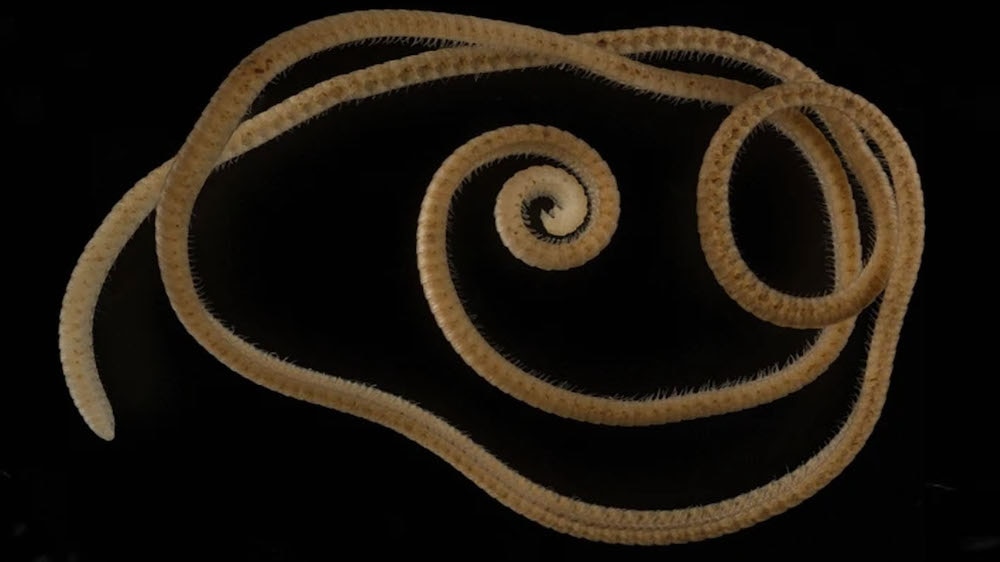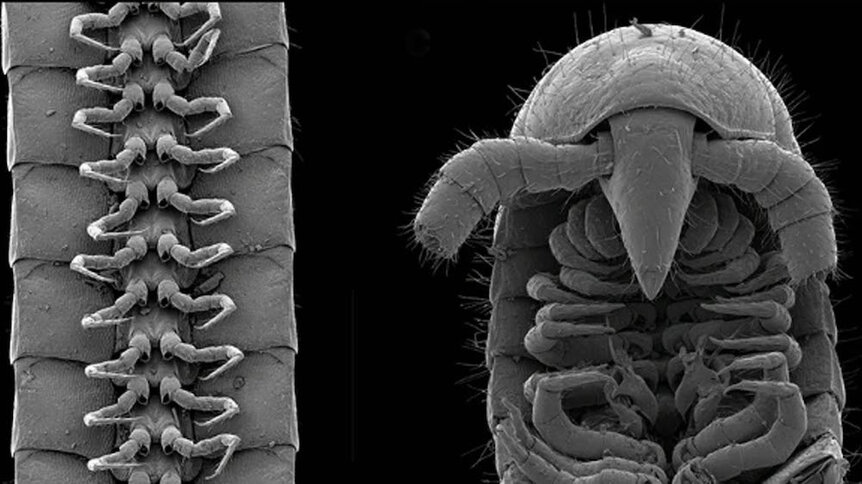Create a free profile to get unlimited access to exclusive videos, sweepstakes, and more!
Millipede with more legs than any other known creature actually lives up to its name
The most legs ever found on a millipede never exceeded 750 — until now.

Creature features often exaggerate bugs to make them into arthropod Godzillas, but this millipede was never auditioning for a movie.
Eumillipes persephone is one millipede that actually lives up to its name. Something that comes from 200 feet underground in the eldritch depths of Australian caves obviously never wanted to be a star, but it's getting attention for actually having the thousand legs millipedes were named for. There is no other species of these many-legged monsters that has nearly that many. The longest E. persephone found has 1,306 of them.
“Millipede” literally translates to “thousand feet.” Despite that, the most legs ever found on one never exceeded 750 — until now. Entomologists Paul Marek of Virginia Tech, who led a study recently published in Scientific Reports, coauthor Bruno Buzatto of Bennelongia Environmental Consultants in Australia, and their research team came upon the subterranean creeper (which is eerily transparent and has no eyes) in an abandoned mine.
“The increased leg number we saw in E. persephone contributes more pushing power to force it through small crevices and openings in its subterranean habitat,” Marek told SYFY WIRE. “The exact lifespan in this species is uncertain, but may be longer than that of many millipedes.”
No wonder E. persephone was named after the mythological queen of the underworld. The thing was hiding in the Goldfields of Western Australia, where nickel and cobalt miners bore holes that can sometimes be over 300 feet deep. The holes are capped and forgotten about if nothing is there. Marek and his team decided to search for a different kind of treasure by opening those holes back up, and sending down cups of decaying leaves and other rotting matter that detrivores like millipedes usually go for. They ended up finding entomology gold.
With a body a hundred times longer than it is wide, it E. persephone slinks through the cracks in its dark habitat, where it is thought to feed on fungi. Its numerous legs also made the researchers suspect that it lives longer than other millipedes (which typically last about 2 years) because of how these creatures grow. They keep adding more and more body segments, or rings, with age. The longest of the four specimens studied had 330 rings to support all those legs. E. persephone may be able to make it through five and maybe even ten years.
“The exact lifespan of E. persephone is uncertain, but looking at other slow-growing organisms, which typically live long, they sometimes have a slower metabolism,” said Marek. “This may also occur in E. persephone, but for now, most of these biological questions remain mysteries.”
The millipede lives in an environment that has gone mostly unexplored, but neither Marek nor Buzatto would call it an extremophile. E. persephone must have evolved its transparency and lack of eyes as adaptations to darkness. Other than that, the conditions it lives in are nothing like what a tardigrade often has to put up with. Things underground are actually milder than conditions on the surface. Cooler temperatures keep subsurface dwellers from frying in the heat of the Australian summer, and there is also less humidity. But are they under pressure?
“You only have significant differences in pressure when you look at differences of thousands of feet,” Buzzato said. “A 200-foot difference — in this case downwards, creating higher pressure — does not result in a significant change in pressure. These animals actually live above sea level.”
Millipedes and other decomposers might freak some people out, but the deep soil ecosystems they inhabit are important for the surface. Recycling happens underground. Decomposers like millipedes feed on detritus that gets fragmented into much smaller pieces where bacteria and fungi can breed and further break it down into nutrients that are needed by most life-forms. Carbon, nitrogen, and simple sugars are all released by decomposing processes. The soil that E. persephone lives in is like a filter for toxins that would otherwise sneak into the water we end up drinking.
“We need to keep learning more about this ecosystem and its inhabitants, such as millipedes,” said Marek. “Then we are better prepared to understand how it serves this important role.”
It’s probably safe to assume that this leggy life-form can’t dance, but that would mean hundreds of pairs of shoes.



























